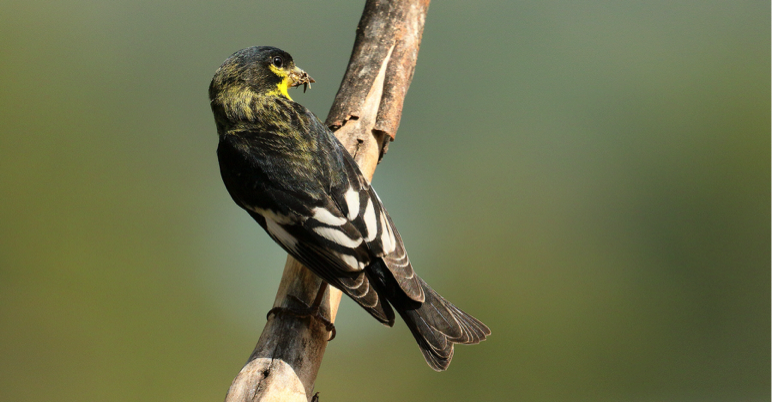By Ethan Rickards and Bob Walker
The Lesser Goldfinch (Spinus psaltria), though small, is quite noticeable. The bright golden hues across the chests of both the male and female give this finch its namesake. The head and nape of the adult males boast colors of a glossy black, with white stripes ranging down the wings; juveniles and females have golden yellow hues down the back. Interestingly, we have two variations of the Lesser Goldfinch. A green-backed variation common to the western USA is seen more often in New Mexico, while there is a black-backed version that is most commonly seen in states to the east, such as Texas. We live in a region where both races overlap, and so you will notice both varieties, as well as mixtures of the two. The photos below show both the female Lesser Goldfinch, and a male Lesser Goldfinch of the Western (green-backed) race.

Left: Female Lesser Goldfinch Right: Green-backed (male) Lesser Goldfinch
Although a few Lesser Goldfinches can be seen here throughout the winter, most fly to the Los Alamos area to breed in the summer, and then return to Mexico during the winter. Seen commonly in the hopper or house feeder in the nature center’s wildlife observation area, these birds often eat in large groups, feasting primarily on sunflower, millet, and nyjer thistle seed.
Lesser Goldfinches are quite vocal and display a variety of calls and songs, including ones that mimic other birds. Listen to a common Lesser Goldfinch call:
You can also find more detailed articles about the Lesser Goldfinch online at identify.whatbird.com and allaboutbirds.org. Enjoy more beautiful photos of Lesser Goldfinches at the Lynda Goff and Jacob Spendelow web sites.

